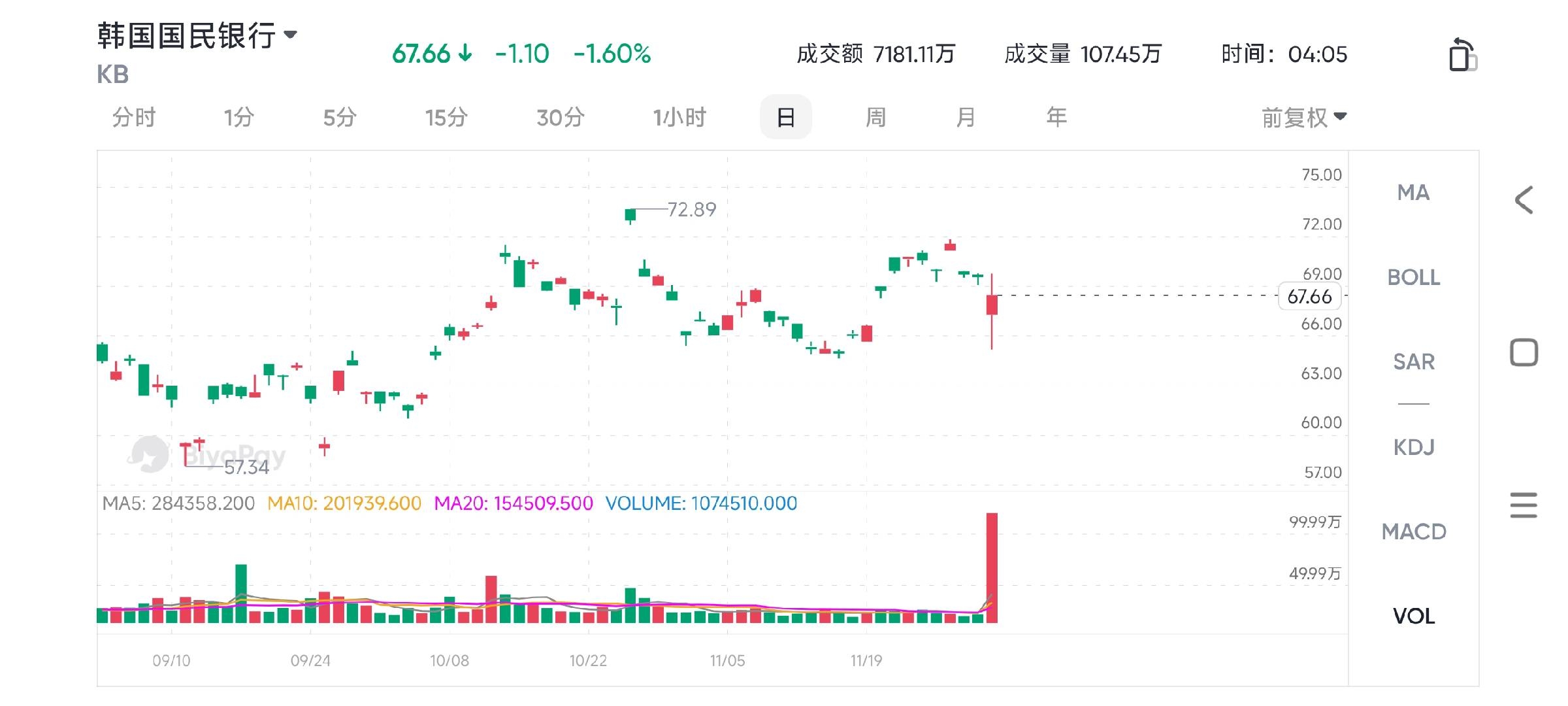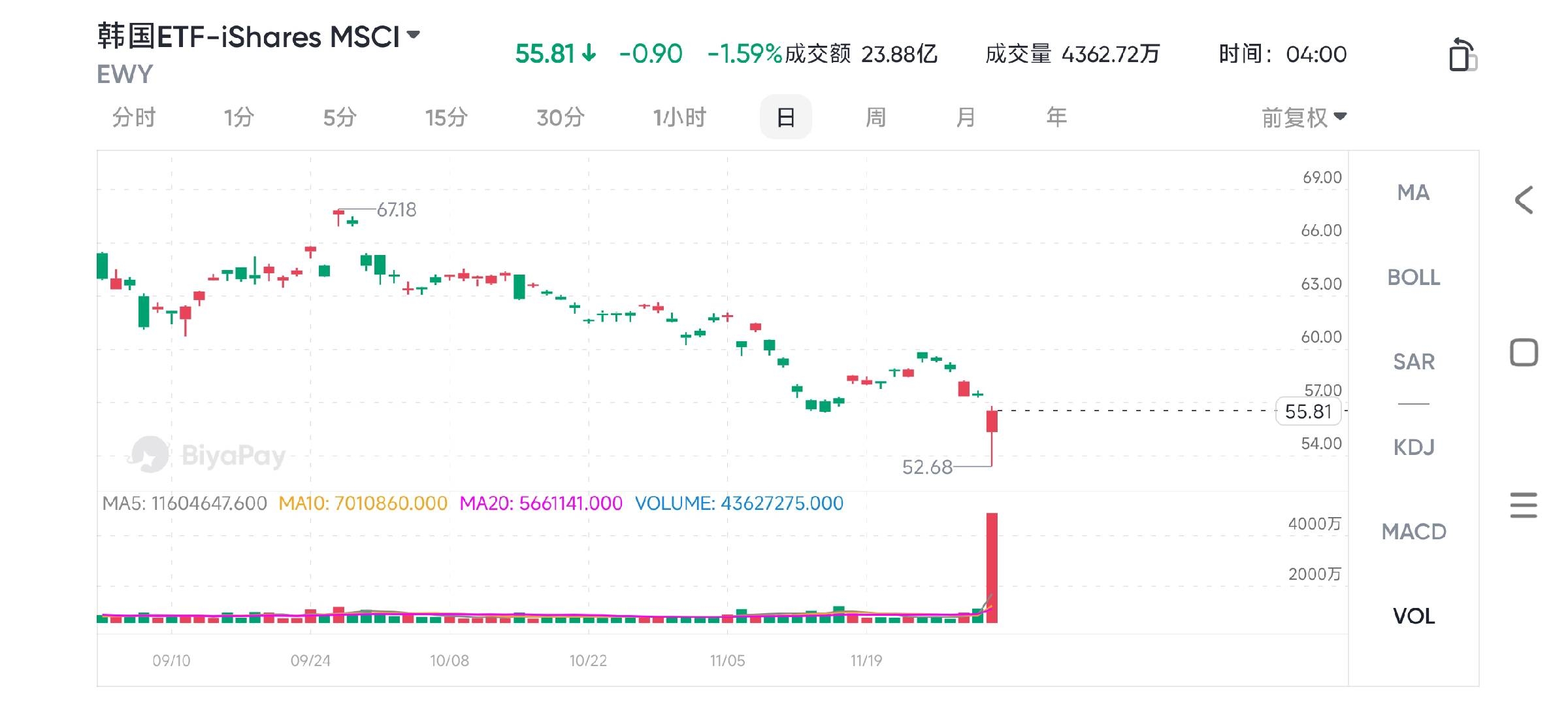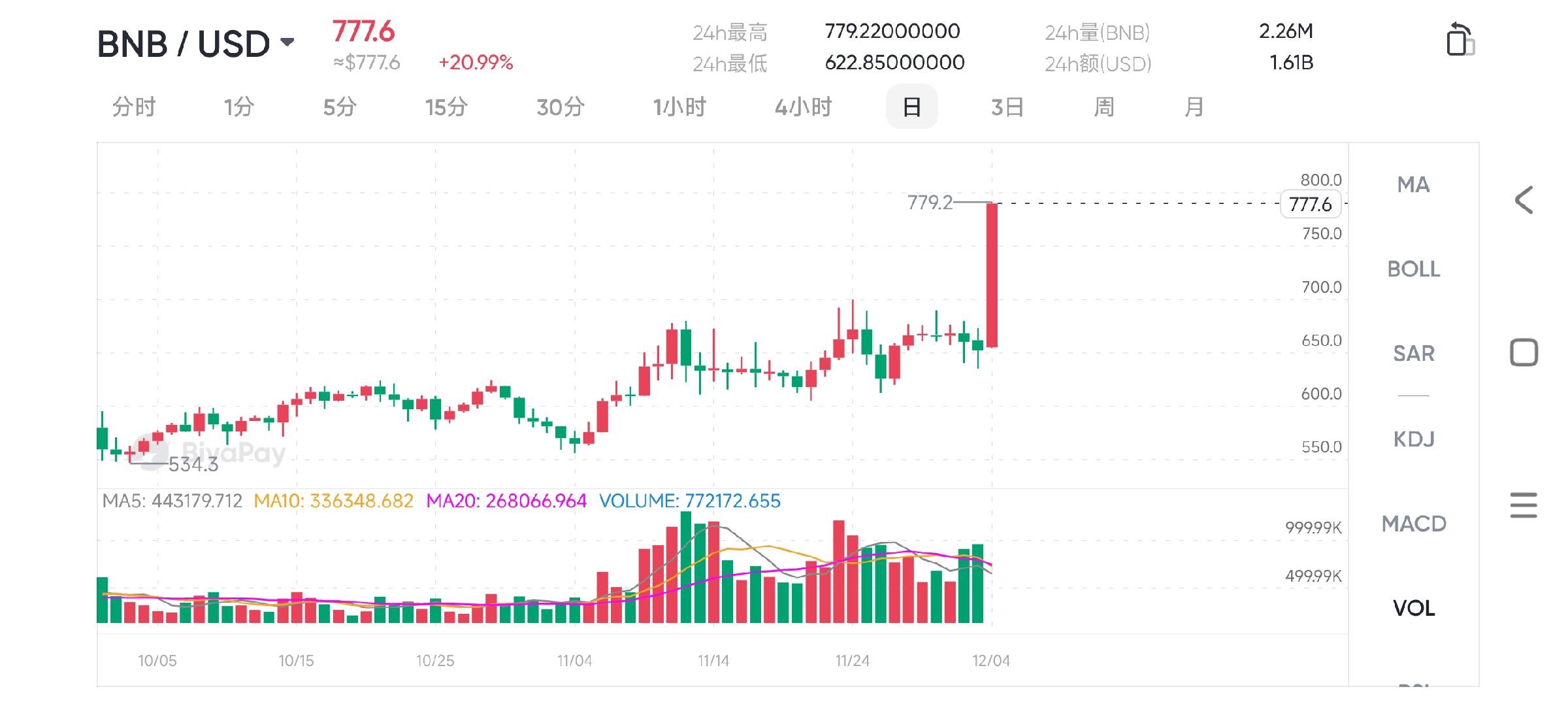On December 3, 2024, at 22:25, South Korean President Yoon Suk-yeol announced a state of emergency, which immediately triggered severe volatility in both domestic and international financial markets. The emergency order not only dealt a heavy blow to traditional financial markets but also caused unprecedented turmoil in the cryptocurrency market.
Despite the rapid implementation of a series of countermeasures by subsequent financial regulatory agencies, the market turbulence and political uncertainty still had a significant impact on investor sentiment.
Financial Market
On the first trading day after the emergency order, the KOSPI index in Korea dropped by 2%. After the government quickly implemented measures to stabilize the market, the stock market's decline narrowed, ultimately closing down about 2.04%.
In the financial sector, KB Financial Group's stock price fell by over 7%, while the stock price of the National Bank of Korea dropped by 6%.

Leading tech companies like Samsung Electronics and SK Hynix were also not spared, both seeing declines of over 2%. This series of stock price drops reflects the market's panic over economic and political uncertainty.
On the MSCI Korea ETF (EWY), which tracks over 90 large and medium-sized companies in Korea that global investors are focused on, there was also a significant decline. In the U.S. market, this ETF once plunged by 7%, then slightly rebounded, but ultimately maintained a decline of 1.6%.

The exchange rate of the Korean won against the US dollar has also shown dramatic fluctuations: the won depreciated by 2.7% at one point, hitting a two-year low, reflecting investors' concerns about the uncertainty of the Korean economy. However, with subsequent market stabilization measures implemented, the won's exchange rate began to rebound, nearly returning to pre-emergency order levels.
The 10-year Korean treasury futures also faced a 0.5% drop; in the bond market, the spread of high-rated Korean dollar bonds widened by at least 5 basis points, indicating an increase in investors' assessment of Korea's debt risk, thus raising the risk premium in the debt market.
Cryptocurrency Market
Korea's cryptocurrency market has also experienced significant fluctuations, especially with sharp declines in the prices of Bitcoin and some altcoins.
Major local cryptocurrency exchanges like Upbit and Bithumb also experienced temporary outages, significantly affecting trading activities. Bitcoin's price once plummeted from 134 million won (approximately $94,500) to 88 million won (approximately $62,100), a drop of over 30%. This severely impacted investor confidence, with many users starting to attempt to sell off assets in response to market uncertainty.
At the same time, local XRP (Ripple) also experienced a severe decline, with prices plummeting by over 60%. This sharp drop further intensified market panic, especially affecting the liquidity of the cryptocurrency market, with some exchanges even experiencing brief trading outages.
Despite the severe volatility in the market, Korea's cryptocurrency market is not entirely negative. Although major cryptocurrencies like Bitcoin and XRP saw substantial price drops, many savvy investors quickly seized the opportunities presented by these price fluctuations. Particularly, with the emergence of price discrepancies, some investors began to flood into the local market for arbitrage.
For example, on the local exchange Upbit in Korea, although Bitcoin once fell to 88 million won (approximately $62,100), a drop of over 30%, the global Bitcoin price remained around $96,479, resulting in a price gap of nearly $1,000.
This price gap has attracted significant attention from investors, with reports of a large influx of outside capital into the local market in Korea, amounting to over 100 million dollars. This influx of funds quickly raised market prices, resulting in a buying frenzy.
How to find treasure coins in this wave of cryptocurrencies
Other altcoins such as Binance Coin (BNB) also performed prominently during this market fluctuation, particularly TRX, which soared over 90% in just a few hours, setting a new historical high. These fluctuations reflect the coexistence of uncertainty and opportunity in the current market, especially with the strong return of long-established cryptocurrencies.
Behind this phenomenon, several market trends are worth noting:
First, older cryptocurrencies with larger circulating volumes have shown particularly strong performance. Cryptocurrencies that previously held important positions in the last bull market have recently seen significant gains, while comparatively, newly issued cryptocurrencies have performed relatively flat, indicating investors' preference for mature cryptocurrencies.
Secondly, the integration of blockchain with the real world has become a core driving force in the market. Sectors such as decentralized finance (DeFi) and stablecoins (like BNB) continue to perform strongly, drawing in large amounts of capital and further fueling market enthusiasm.

The dominant role of American capital has become increasingly evident, as the trading volume changes of XRP show strong demand on platforms like Coinbase, further strengthening market optimism. Currently, the altcoin market is in the initial phase of a capital rush, and a second wave of main upward trends is expected, with market enthusiasm potentially lasting until the first quarter of 2025.
In summary, the current altcoin market is in a golden period, and investors should cherish the opportunities in these months, flexibly adjust strategies, and seize the upcoming second phase of the altcoin rally.
In the cryptocurrency market, the sharp decline in major cryptocurrencies like Bitcoin and XRP, while causing panic among many investors, also brought about arbitrage opportunities. With the emergence of price discrepancies, clever investors rushed into the market to exploit these opportunities for short-term trading, driving up the prices of certain cryptocurrencies, and even leading to a 'bottom-fishing' phenomenon.
Overall, although the market is turbulent, investors have shown strong resilience and flexibility, and the market remains full of potential. As the situation gradually stabilizes, investors will have opportunities to find new prospects in the coming months amidst this volatility.
